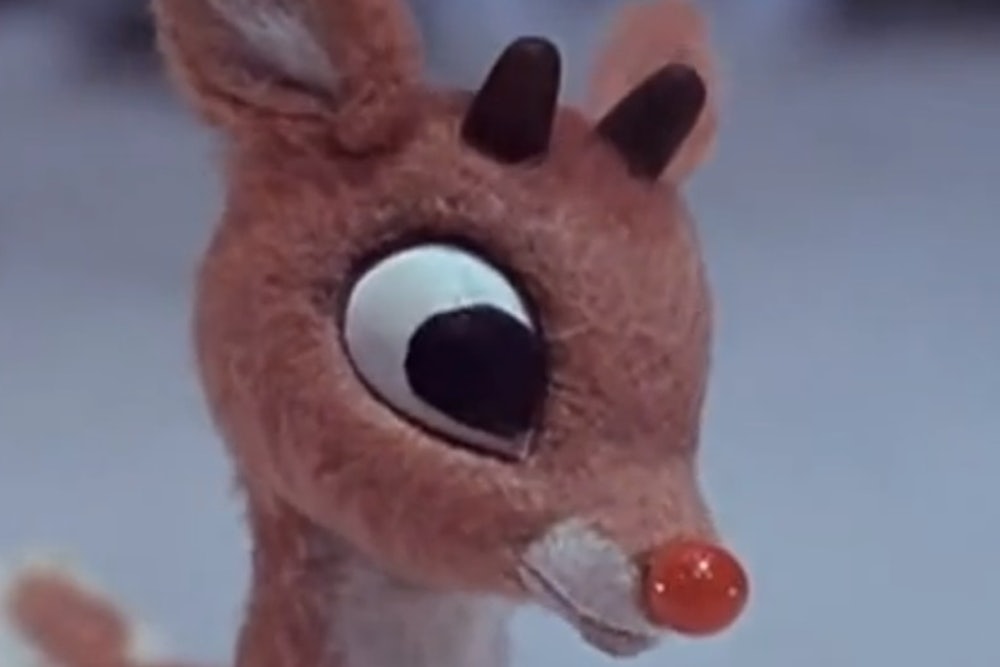We know all about the social consequences of Rudolph’s perpetually red nose, but the song doesn’t get into what’s behind the reindeer’s most marked characteristic. Luckily, science is here to help. Here are a few possible explanations:
His nose is full of parasites
According to Norwegian scientist Odd Halvorsen, the “celebrated discoloration” of Rudolph’s nose may be due to a parasitic infection. Apparently, reindeer—in spite of their freezing environment—play host to dozens of parasitic bugs and worms.
He's embarrassed
Shame is one of the most common causes of facial flushing, and Rudolph has good reason to blush: All of the other reindeer, after all, used to laugh and call him names. Of course, it’s implied that his red nose is the cause, not the effect, of his social exclusion—but maybe he’s caught in a vicious cycle.
He's an alcoholic
A red face is one of the most common side effects of over-imbibing—maybe all those reindeer bullies drove Rudolph to the bottle? Eggnog and mulled wine are always in season on the North Pole. Again, though, the cause-and-effect issue.
He has allergies
Rudolph might be sensitive to those peanut butter cookies Santa’s always bringing home. Or maybe he's having a bad reaction to the raw materials Santa imports.
He's a drug addict
Drugs that can cause facial flushing include heroin, LSD, and Viagra. Or maybe Rudolph was snorting lines off Prancer's back?
He's cold
According to the least fun explanation, Rudolph’s red nose is a physiological reaction to the extreme cold of the North Pole. A team of scientists, supported by the British Medical Association, found that the concentration of nasal capillaries is 25 percent denser in reindeer than in humans. So when blood flow increases in response to exercise—think sleigh-pulling—or cold climates, it’s going to show in reindeers' noses. This doesn’t explain, though, why Rudolph was affected more than other members of his herd.
